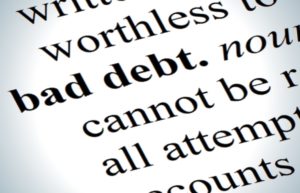Sponsored
Today’s post was written by Stephen Davies, a South African copywriter currently living in the UK. You can read more about him on his Facebook page.
 Debt is something that’s often vilified because it can destroy people’s lives. But while we often hear of the damage debt can cause, it’s also important to consider the many opportunities debt can give us, such as buying a home and going to university, which we might not ordinarily be able to do.
Debt is something that’s often vilified because it can destroy people’s lives. But while we often hear of the damage debt can cause, it’s also important to consider the many opportunities debt can give us, such as buying a home and going to university, which we might not ordinarily be able to do.
While it is possible to live debt-free, it’s not necessarily a wise decision. Borrowing can play an important part in helping us live a rich and fulfilled life, but for that to happen we need to borrow at the right times and the correct price.
What is a good debt?
 A good debt is one that represents a sensible investment in our financial futures. It is a debt we can afford to repay that allows us to fulfil our long-term and sometimes short-term goals. There should be a specific reason for taking the debt out and the debt should have a positive impact our financial position.
A good debt is one that represents a sensible investment in our financial futures. It is a debt we can afford to repay that allows us to fulfil our long-term and sometimes short-term goals. There should be a specific reason for taking the debt out and the debt should have a positive impact our financial position.
If we take the example of a mortgage, although in most cases it involves borrowing a huge amount of money, ultimately it will further your financial position. That’s because your mortgage repayments buy you equity in your property and eventually, once the mortgage has been paid off, you will own your own home. Rental payments, on the other hand, buy you nothing more than a temporary roof over your head.
A student loan is another example of a good debt. Yes, you are creating a debt in the first instance, but a university degree is an investment in your future that will hopefully allow you to earn more money in the long run.
What is a bad debt?
When considering whether a debt is good or bad, the lender Wonga suggests there are three questions you should ask:
- What’s it for?
- Can you afford it?
- What will it cost you?
 And we think that’s a good starting point. Bad debts are those that you can’t really afford, don’t further your long-term financial position and are disproportionately expensive. As you’d probably expect, there are a lot more examples of bad debts than good debts.
And we think that’s a good starting point. Bad debts are those that you can’t really afford, don’t further your long-term financial position and are disproportionately expensive. As you’d probably expect, there are a lot more examples of bad debts than good debts.
Taking out a loan to go on a luxury holiday, buying a fancy car just to keep up with the Joneses or borrowing money to buy clothes or go on a night out are all examples of bad debts. If you’re struggling to manage your bad debts, here are 10 helpful tips to get your finances back in order.
Are you struggling to repay your debts? Perhaps you have an example of a good debt that turned bad, or vice-versa? Please share your thoughts in the comments below.
Stephen G Davies MSc writes about world news, finance, marketing, technology, business and covers product reviews for global firms. Stephen has written for digital agencies, e-zines and maintains a passion for updating a number of his own blogs. Writer by day, reader by night, Stephen enjoys being aware of world events and affairs and is passionate about related topics. He is the sponsor of this post and you can read more about him on his Facebook page.



Leave a Reply